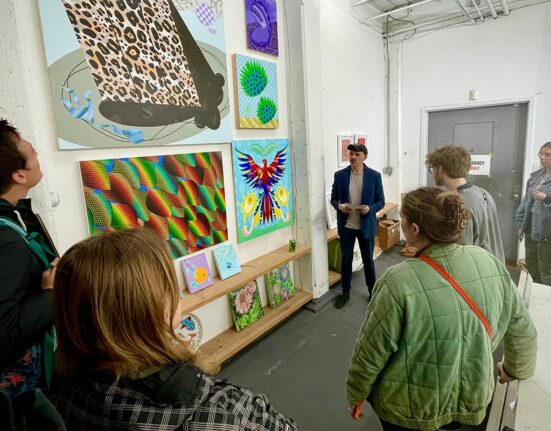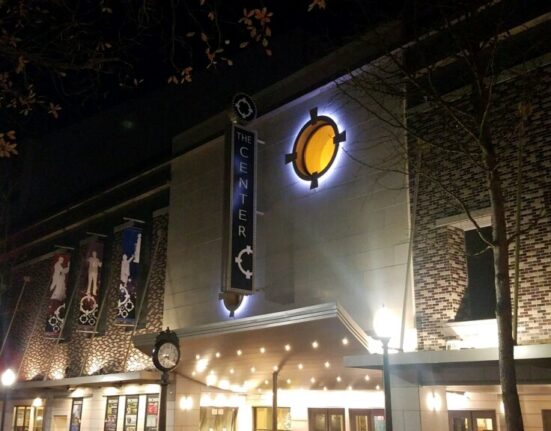How do you measure the United States in the 20th century without Langston Hughes, Zora Neale Hurston, Louis Armstrong and Duke Ellington?
You wouldn’t dream of it. The writers, poets, singers and musicians of the movement known as the Harlem Renaissance, centering around the New York neighborhood from 1919 to the end of the 1930s, loom large in the American cultural imagination. The period was when “Harlem became the symbol for the international black city,” as the novelist Ishmael Reed described it.
But what about the painters Laura Wheeler Waring, Charles Henry Alston and Malvin Gray Johnson? Or the sculptor Richmond Barthé? Hardly household names. And while other visual artists — Aaron Douglas, Jacob Lawrence, Archibald Motley Jr., Augusta Savage — have long been celebrated, their contributions have until recently been too often treated as a byway, separate from the rest of European and American modernism.
An ambitious new exhibition, “The Harlem Renaissance and Transatlantic Modernism,” opening Feb. 25 at the Metropolitan Museum of Art, hopes to shift our view of the time when Harlem, energized by the arrival of thousands of African Americans through the Great Migration, flourished as a creative capital.
“When I was a student, none of the survey courses of 20th century art I took included the Harlem Renaissance,” said Denise Murrell, the show’s curator. “This was the first moment where you have Black artists portraying all aspects of a new, modern city life that’s taking shape in the ’20s through the ’40s. They were so international, spending extended periods of time in Europe and engaging with avant-garde aesthetics. They were in the middle of all of these crosscurrents, not as observers but as participants.”
And after years of being the subject of racial stereotyping, Black artists were able to tell their own stories, Murrell said. “They were trying to define, to be self-defining, to articulate their own sense of who they saw themselves being and becoming.”
Murrell, who completed a Ph.D. in art history at Columbia University after a 20-plus year career in finance, joined the Met in 2020. Now she’s taking up the challenge set by Alain Locke, a trailblazing critic during the Harlem Renaissance whose 1925 essay “The New Negro” became a touchstone for Black aesthetics. Locke encouraged artists to draw on African art — not the way European artists were doing, as a form of primitivism, but as an ancestral tradition. At the same time, he insisted that they should work in dialogue with, and show their work alongside, European modernists.
The Met exhibition will include around 160 paintings, sculptures, photographs, as well as books, posters, films and ephemera. Among these will be works by a handful of European modernist painters — Kees van Dongen, Henri Matisse and Edvard Munch among them — who were in dialogue with Harlem Renaissance artists, writers and musicians. The move is intended to underline Murrell’s thesis that this was indeed a trans-Atlantic movement.
‘Stupefying, clueless racism’
This is the second time the museum is doing an exhibition about Harlem; the first was in 1969. “Harlem on My Mind” was the brainchild of Thomas Hoving, a new director at the Met, who was anxious to bring diverse audiences into the institution, and an independent curator, Allon Schoener, who had a reputation for novel, multimedia displays that delved into the history of New York City.
Though the museum had collected and displayed African art, it had never broached the subject of African American culture. So it came as a surprise to Black artists, curators and community leaders to discover that “Harlem on My Mind” didn’t include a single painting or sculpture by an African American artist. Instead, Schoener relied on documentary photography, text, sound and other immersive strategies to convey the vitality of Harlem and its people.
The outcry was immediate: Several artists, including Benny Andrews, Camille Billops and Cliff Joseph, formed the Black Emergency Cultural Coalition. They picketed the museum every day, eventually drawing the attention of local news crews.
Murrell let out a sigh when asked about the show. “I was not hired by the Met to do a corrective show to get them over ‘Harlem on My Mind,’ ” she said firmly. “When you realize what the curators of that show were actually saying — ‘Well, there was no fine art in Harlem, so we don’t have to include any artists’ — you can see the stupefying, clueless racism of the endeavor, and that is a historical context that I think we inevitably do have to address.”
One of the bright spots of “Harlem on My Mind,” according to Murrell, was the presence of work by the photographer James Van Der Zee (1886-1983), who chronicled Harlem life during his long and prolific career. In 2021, the museum entered into a partnership with the Studio Museum in Harlem and Van Der Zee’s widow to establish an archive of his work, including 20,000 prints. Murrell’s exhibition will include some that have never before been shown. (The Met’s show comes more than 35 years after the Studio Museum’s own 1987 exhibition on the art of the Harlem Renaissance.)
A legacy built by Black institutions
Despite the lessons learned from “Harlem on My Mind,” the Met did not prioritize collecting work by African American artists until relatively recently. Only 21 objects in the upcoming show are from the Met’s collection, along with the suite of Van Der Zee’s photographs.
“We have such a spotty collection in terms of African American painting and sculpture, like all other P.W.I.s,” said Murrell, using the acronym for “predominantly white institutions.” To look at the movement in depth, the Met turned to loans from a handful of collectors and museums who have formed a rich repository of work by Black modernists of the early 20th century, including the Schomburg Center for Research in Black Culture in Manhattan and the Walter O. and Linda Evans collection in Savannah. (The National Portrait Gallery and Smithsonian American Art Museum in Washington, D.C., which also lent works to the Met, had received donations from the Harmon Foundation in the 1960s.)
Most important, it meant diving into the holdings of a group of historically Black colleges and universities, which were acquiring works from the start: Fisk University, Howard University, Clark Atlanta University, and Hampton University.
Because many museums at H.B.C.U.s have not had the financial resources or staffing to put their collections online, Murrell traveled to each campus in person to understand the full extent of their holdings. Kathryn Coney-Ali, the co-executive director at Howard University’s Gallery of Art in Washington, D.C., which lent six pictures, said she was heartened that well-resourced institutions — including the Met, the Getty Museum, Los Angeles County Museum of Art and the Mellon and Ford Foundations “are seeing that there’s a need to preserve these collections, these assets, these cultural effects, at historically Black colleges and university because they’re gems.”
A family reunited, an artist rediscovered
Some of those gems had been tucked away in attics and basements of artists’ families.
Roberta Graves had been on a yearslong mission to interest museums and curators in the work of her great-aunt, Laura Wheeler Waring, who had studied in Philadelphia and Paris and made a name in painting elegant portraits of the Black bourgeoisie and intellectuals starting in the 1920s.
The steward of about 30 of Waring’s paintings, hundreds of watercolors and her archive, Graves had been trying to garner attention for years — to no avail, she said in a phone interview.
In 2014, Graves recalled, a representative from the Woodmere Art Museum in Philadelphia, visited the archive and suggested that, to avoid the headache of trying to find a home for the work, the family “might be better off burning” their Waring holdings. (The museum told The New York Times it had decided not to pursue further conversation about the works in question but that it would never have disparaged an artist’s legacy.) Not even the Pennsylvania Academy of Fine Arts, Waring’s alma mater, seemed particularly enthused at the time.
Graves was so determined that she teamed up with another great-niece of Waring’s, Madeline Murphy Rabb. The two families — the Warings and the Wheelers — had been involved in a legal battle over the artist’s estate, and relations were strained. That was ancient history, as far as Graves was concerned. “I said, together we’re a much stronger force.”
Rabb had also found that recognition for Waring’s contributions was an uphill battle. “I’ve stalked curators, I’ve stalked presidents of museums,” she said in a phone conversation. “I consider it a responsibility.”
Just before the pandemic shutdown, they connected with Murrell, who had included a work by Waring in “Posing Modernity,” her much-praised exhibition at the Wallach Art Gallery at Columbia University in 2018.
When the three women finally met in Rabb’s Chicago living room to discuss plans for the Met’s show, there was celebratory dancing, Rabb recalled. The exhibition will now include nine works by Waring, including five paintings lent by Graves and Rabb.
Discoveries and appreciation
Murrell and her colleagues realized that while some loans — like Aaron Douglas’s 1934 mural “From Slavery to Reconstruction,” part of his series “The Aspects of Negro Life,” normally installed high on a wall at the Schomburg Center — needed only a simple surface cleaning, others required extensive restoration. To stabilize these works, the Met relied on its team of veteran conservators, as well as those of museums around the country, and independent experts.
I met with Isabelle Duvernois and Shawn Digney-Peer in the Met’s conservation lab on the third floor mezzanine. They showed me a circa 1922 portrait that Archibald Motley Jr. made of his father, lent by the artist’s family. The picture is very dark, almost somber — utterly unlike the crowded scenes of jazz age sociability that Motley was best known for. The older man sits, elegantly dressed, in an armchair, with a book in his hand, a painting of a racing scene behind his head, and a small Asian porcelain figurine tucked along the canvas’s edge. It reflects the respect his father commanded in his community more than his actual power — Motley Sr. was a Pullman porter. Duvernois and Digney-Peer were surprised to learn that the tonality, which they first attributed to aging varnish, was entirely intentional on the painter’s part. “When it’s lit well, it doesn’t look dark; it hums,” said Digney-Peer.
“It’s made like an old master painting,” added Duvernois.
In the conservation lab, Waring’s 1930 “Girl in Green Cap,” on loan from Howard University, yielded the biggest surprise: “We saw an unusual passage in the background, so we did some infrared imaging and X-radiography,” Digney-Peer said. There was a second painting underneath — a portrait of two young girls, sitting side by side.
Murrell expects this type of conservation work will continue long after the exhibition. “We have the new wing,” she said, referring to the Met’s planned galleries for modern and contemporary art, the Tang Wing, due in 2029, at an estimated cost of $500 million.
“We want to have a very major Harlem Renaissance presence when that reopens,” she said. “We’re going to have acquisitions, and it’ll be an ongoing project.”
It’s hard not to share Murrell’s excitement for the upcoming show, and for its potential to reorient the view of an era scholars thought they knew. “It’s both a celebration of the period, a reintroduction of the period, a new introduction for people of a certain generation and from a certain art historical point of view,” the curator said.
If she’s right, students of succeeding generations will never take survey courses of art history that fail to include the Harlem Renaissance. And Murrell said she is optimistic, as well, that showcasing works from H.B.C.U. collections will “attract new support that goes directly to those museums, so they can build out their infrastructure and show more of what they have.
“There’s no reason a Fisk or a Hampton, with their impressive museums, couldn’t do a show of this scale,” she said, “if they only had the resources.”







